Cross training for cycling: running, weights, dance - the pros are doing it and so can you
Many of the world’s best cyclists are also very accomplished at other activities – and perhaps it’s no coincidence. Dr Josephine Perry lays out a smorgasbord of sideline interests to complement your riding
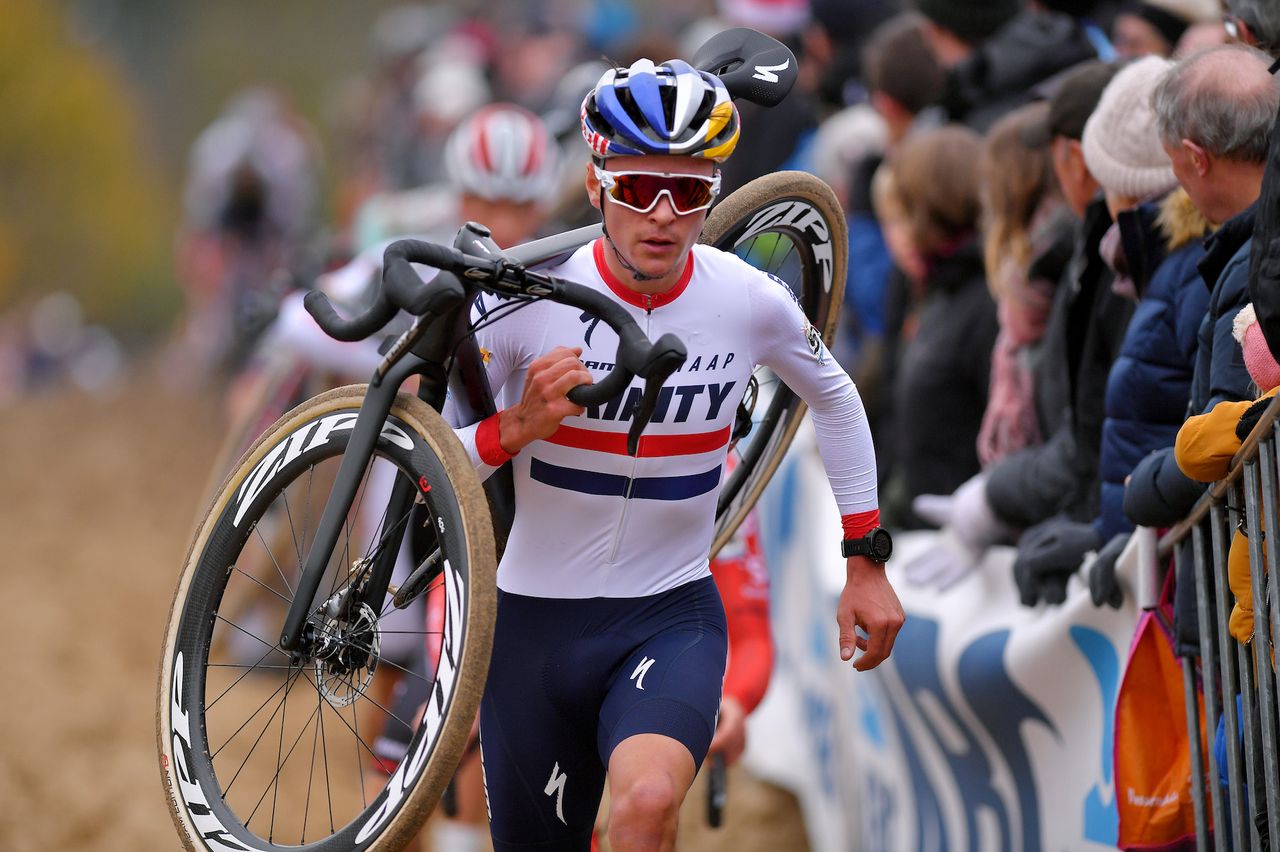

Cycling gives us a strong sense of who we are. As cyclists, we’re lovers of freedom, speed and achievement. We enjoy working hard to push to the next level, and we share a sense of belonging in a sport with a deep history and culture.
All of this is underpinned by the knowledge that our hobby helps keep us physically and mentally healthy. But being secure in our commitment to the two-wheeled life should give us the confidence to integrate some cross training in other sports alongside cycling - done correctly, it’ll boost your performance on the bike, as well as helping to keep you mentally fresh.
There will always be times when riding your bike just isn’t feasible. Perhaps it’s icy outside, your bike is being fixed, you have an injury or you simply fancy doing something different. When an injury forced me off the bike for several weeks, I took out a new gym membership and it opened up a range of new options that I’d been too bike-fixated to notice.
After trying out a bunch of new sports, I headed back to cycling stronger and more resilient. The shake-up was mentally invigorating, and the strengths developed should help make me less injury-prone and more adaptable. Could adding in some alternative endeavours boost motivation, increase physical and mental exibility, build different strengths and help you develop transferable skills? In this feature, we’ll take a look at different activities you could do alongside your riding – with a wide range of potential benefits on and off the bike.
Five pros with cross training interests
Tom Pidcock (Ineos Grenadiers) posted a 13.25 5k run on Strava in December 2020. The accuracy of that performance has been queried but even so, it has been reported that Nike has invited him over to its Oregon, USA base to put his running ability to the test.
OK, so this one is quite well known. Olympic gold medallist in the time trial, Primož Roglič (Jumbo Visma), was previously a competitive ski jumper. He even won the Junior World Championship, aged 17.
Fiona Schroeder (Team Torelli) was a footballer and professional musician before going full-time on her bike.
Get The Leadout Newsletter
The latest race content, interviews, features, reviews and expert buying guides, direct to your inbox!
Mark Cavendish (Quick StepAlpha Vinyl) was a ballroom dancer as a child. From seven to 16, he trained in the jive, samba and rumba.
US track, cyclo-cross and gravel cyclist Christina Birch won 11 National Champs in cycling (all while completing her PhD in biological engineering) and has been chosen by Nasa to train for one of the hardest athletic pursuits of all – to become an astronaut.
Best cross training sports for cycling
Running
A post shared by Adam Yates (@adamyates7)
A photo posted by on
No, we are not trying to turn you into duathletes, but running is a popular second sport for many riders – even the pros. Adam Yates (Ineos Grenadiers) ran the Barcelona Marathon in November in a very decent two hours, 58 minutes, and soon afterwards Tom Dumoulin put in an even more impressive 32.38 10k time in Maastricht. Former Olympian Michael Woods (Israel Start-Up Nation) has run a sub-four-minute mile, and Primož Roglič (Jumbo Visma) is reported to run every day, even during the Tour de France.
Running’s popularity for cross-training cyclists stems from its simple logistics - but it has great fitness benefits, too. Low-impact sports, such as cycling, can lead to a decrease in bone density (which declines with age anyway), meaning we are at higher risk of stress fractures and osteoporosis. Unlike cycling, running is a weight-bearing exercise, so it strengthens bones and reduces our long-term injury risk.
Getting started: The most important kit element in running is, of course, the trainers – and comfort comes first; don’t get too distracted by the marketing hype around go-faster midsole materials. Other than shoes, you just need shorts/ longs and a quick-wicking top. If you’re new to running, start slowly and build up gradually, as it will take several weeks to condition your muscles and tendons. To run with others, find your local running club at www.englandathletics.org/find-an-athletics-club.
It works for me: Matt Williams, 34, rides with Cardiff Ajax CC and runs about 15k a week. “My running replaces what would be an hour doing tempo or sweetspot on the turbo. It was really difficult at first and left my legs feeling very heavy, but over time I think it’s really benefited my recovery and given my legs a bit of extra ‘snap’ for those hard accelerations.”
Dance
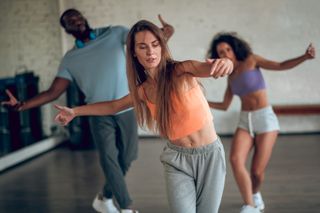
Dr Nicky Keay not only works with cyclists and dancers as an endocrinologist supporting those with issues such as RED-S (relative energy deficiency), she also leads four ballet classes a week and at least a couple of rides, often around Richmond Park in London.
Keay explains that, as well as giving you a strong core and legs, with multidirectional loading a boon for your bones, dance is a win-win activity for cyclists. “Dance is all about efficiency and fluidity of movement and it improves your proprioception [awareness of where your body is in space] and balance, helping your cycling style and bike-handling skills.” It improves your positioning within a peloton too, as dance classes see you having to constantly reassess your position and spacing against others – something many riders could benefit from for group rides.
Getting started: The easiest way to get started is a crossover class – fitness driven but with dance at the core, such as Barre, Zumba or Salsa. Don’t worry, you don’t need a tutu! Any sports clothes will work to begin with, but do buy some non-slip socks. You can search for classes at www.dancenearyou.co.uk
It works for me: Keay loves her cross training for cycling mix of dance and riding. “Ballet helped me get back to my full range of activities after ACL reconstruction and two total hip replacements. For cyclists, doing different activities is helpful mentally, and mixing up training modalities means better adaptations.”
Free weights
Doing weighted exercise isn’t just a helpful activity to improve your cycling – it can be absolutely crucial. Tom McClelland is UK head of athletic training at Virgin Active and regularly works with riders over winter, helping to get them ready for the race season. He insists that strength training and conditioning work doesn’t only help you go faster on the bike, but is also the first line of defence against common cycling injuries.
Getting started: A session with a PT at a gym will teach you the key techniques. For those doing strength work at home, McClelland suggests a core routine with these four exercises: front squats, Bulgarian split squats, single-leg Romanian deadlifts and Russian kettlebell challenge plank - google these terms for advice on how to do them.
These exercises will help you build strength in your quads, glutes and hamstrings and increase your flexibility to prevent injury.
It works for me: Matt Williams’ cross-training for cycling extends to weights sessions alongside his running and cycling. “I don’t do a huge amount of lifting, just one session a week focusing on compound lifts.
“I’ve really felt benefit to my core strength, and it takes much longer for my back and shoulders to get tired, especially in TT position or in the drops. My sprint has always been terrible, but it’s a little less terrible now.”
Breathwork
Breathwork helps you control your breathing to change your emotional state. If you feel anxious before a race, changing your breathing rate and pattern can break the ‘ fight, flight or freeze’ response and take you out of panic mode and back into a logical, rational racing mindset. Cyclist and yoga teacher Lexie Williamson explains how to apply breathwork to racing situations. “For time trials when our chest is compressed in the aero position, it helps to belly-breathe. For breakaways mid-race, taking a fuller, slower and more effective breath when you are in the red, rather than quick gasps, will keep you calmer.”
Getting started: Williamson’s book Yoga for Cyclists has a full chapter on breathwork. If you would prefer to listen and join in with audio instructions, a well regarded app that explains exactly how to breathe for different scenarios (sleeping, calming, energising) is Breathwork.
It works for me: Williamson uses breathwork as a distraction in training and as a recovery tool. “It helps me wind down my nervous system when I’ve had a full-on day of work and training so I can relax and find it easier to get to sleep.”
Rowing
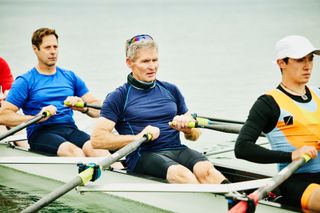
Rowing is another popular sport for cross-training cyclists. In fact, it is where Bradley Wiggins went to try his luck after retiring from the bike; Olympic individual pursuit champion Rebecca Romero had previously won Olympic silver on the water; and Chris Bartley rowed at the 2012 and 2016 Olympics (claiming a silver medal in London) but has now found a home in cycling with a 46:08 PB in the 25-mile TT.
Bartley believes that rowing offers huge benefits to cyclists: “At the elite level, both sports lend themselves to athletes who enjoy or can tolerate a lot of training and respond appropriately. Biomechanically, rowing is often misunderstood as being predominantly arm- or trunk-powered – it’s really mostly a leg-extension-driven sport, not quite to the same degree as cycling, but there are lots of similarities.”
Getting started: Lots of rowing clubs offer beginner courses, but if there are none located near you, learning on an ergometer (“erg”) can work really well, as the fitness, body position and strength and stability benefits develop even quicker in the gym. Once you have sussed out indoor rowing, you can find a ‘Learn to Row’ course on the water at britishrowing.org/go-rowing/learn-to-row
It works for me: “I left rowing with good body-awareness, a strong core, and a decent understanding of how to set up an efficient position. All these factors feed into my enjoyment of cycling,” says Chris Bartley.
Pilates
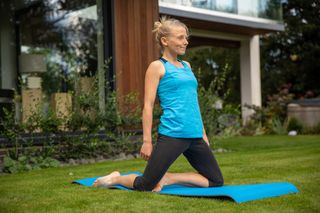
Pilates has a whole host of potential benefits for cyclists. It helps to strengthen your core and improve pelvis and hip mobility, all of which will facilitate more power and efficiency on the bike. One of the big benefits, according to Pilates expert Korin Nolan, is that the strength-based exercises help correct muscle imbalances, which are common in cycling, owing to the fixed position and repetitive pedalling action.
In this way, cross-training with Pilates can help to alleviate tightness and rebalance the body. It can also improve posture, prevent injury, increase flexibility, while being very calming and reducing feelings of stress.
Getting started: There are so many Pilates teachers that you may need to try a few before figuring out who is right for you. It is worth asking for recommendations among your cycling club-mates – there may be someone local who runs classes for athletes. Always start with a beginner class, where you can take your time to learn the moves correctly. Start with one or two classes a week and once you have mastered the basics, include 10 minutes or so either before or after each ride. If you want to start off at home, Nolan teaches on dynamicpilatestv.com. Personally, I love the Trifecta Pilates YouTube channel.
It works for me: Korin Nolan has recently got into indoor cycling. “I absolutely love the intensity and focus it requires, as well as building up an amazing sweat, it makes me feel good all day. I apply Pilates training when I ride, especially in terms of posture.”
Art
Getting creative is a totally different type of mental outlet, though you can still take inspiration from your riding. Anecdotally, art seems popular among cyclists, and one high-achieving example is 42-year-old Bithja Jones, who was crowned British National Hill Climb Champion in October 2021. Jones told me that the true benefit of being an artist is that it allows her to really connect with her riding. “As an artist, you look for experiences to really immerse yourself in. You don’t do anything half-heartedly – and you cannot half-heartedly race a hill-climb! They complement each other so well, as art really gives me headspace when out on my bicycle.”
Getting started: You only need paper and a pencil to begin, then you can expand into colour and paint when you feel ready. There are some great YouTube tutorials to follow while you build up con dence. My favourites come from Rob Biddulph. They are designed for kids but are so compelling and you can find them by searching: ‘Draw with Rob’.
It works for me: “I can go out on a long bike ride and afterwards, while giving my legs and body a rest, I can still experience and relive the ride and reflect on it within my art,” says Jones. “I have done many drawings of hill-climbs since I won the Nationals. I was so packed full of emotions I couldn’t get my head around it and all these pictures have helped me to re-experience and reflect upon it.”
Parkour (street running)
This can be done literally anywhere and is amazing for balance, flexibility and excitement. The intro of Casino Royale is your inspiration here (though pick safer street furniture to begin!). Help to get started is available at: www.parkour.uk
Yoga
More sedate than Pilates but wonderful for relaxation, flexibility, core strength and a little bit of time out from daily stressors. Classes available in practically every town in the country. Roller-skating: Another wheeled sport that works, develops balance and speed, and helps you really feel your body as it moves through the air.
Circuit training
A great way to work on cardio and strength at the same time, usually with excellent camaraderie among classmates that helps you push your limits. Enquire at your local gym.
Kayaking
Surprisingly popular among cyclists, kayaking maintains your cardio fitness while also developing arm and back strength – areas cyclists often ignore. For more details visit www.britishcanoeing.org.uk
Skiing
As travel restrictions lift, book a trip to the mountains – one of the only sports where you can get your speed fix while developing balance and coordination skills. If on a limited budget, head to your local dry slope.
HIIT
High-intensity interval (HIIT) workouts can provide the regular benefits of cardio exercise in a shorter space of time – especially helpful during particularly busy periods of life when long rides are just not feasible.
This article was originally published in the 17 April 2022 print edition of Cycling Weekly. Subscribe online and get the magazine delivered direct to your door every week.

Thank you for reading 20 articles this month* Join now for unlimited access
Enjoy your first month for just £1 / $1 / €1
*Read 5 free articles per month without a subscription

Join now for unlimited access
Try first month for just £1 / $1 / €1
Dr Josephine Perry is a Chartered Sport and Exercise Psychologist whose purpose is to help people discover the metrics which matter most to them so they are able to accomplish more than they had previously believed possible. She integrates expertise in sport psychology and communications to support athletes, stage performers and business leaders to develop the approaches, mental skills and strategies which will help them achieve their ambitions. Josephine has written five books including Performing Under Pressure, The 10 Pillars of Success and I Can: The Teenage Athlete’s Guide to Mental Fitness. For Cycling Weekly she tends to write about the psychological side of training and racing and how to manage mental health issues which may prevent brilliant performance. At last count she owned eight bikes and so is a passionate advocate of the idea that the ideal number of bikes to own is N+1.
-
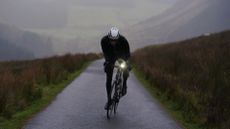 Be seen all year round with 35% off Magicshine bike lights in the Amazon Big Spring Sale
Be seen all year round with 35% off Magicshine bike lights in the Amazon Big Spring SaleThis is your last chance to seize a deal on some of the best bike lights with daylight running features. Act fast, as the sale ends at midnight tonight
By Matt Ischt-Barnard Published
-
 Fabio Jakobsen forced to halt cycling for 'foreseeable future' due to iliac artery flow limitations
Fabio Jakobsen forced to halt cycling for 'foreseeable future' due to iliac artery flow limitationsDutch sprinter set to undergo surgery in order to attempt to fix the issue
By Tom Thewlis Published
